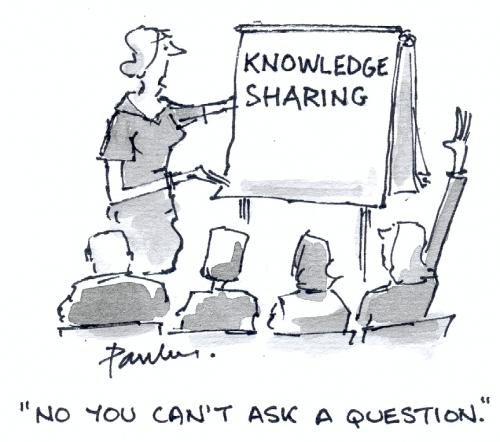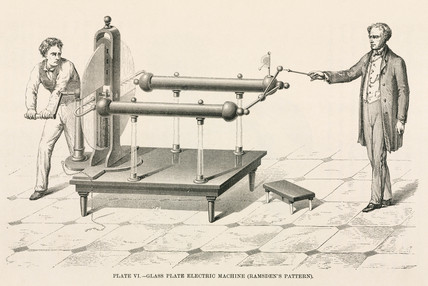 There was a very interesting lecture from dr. Firat Yazicioglu yesterday. This lecture, entitled Analog Signal Processing for Bio-Medical Applications, was at IMEC Belgium in Leuven. However, Biomedical Group members attended the lecture online, using streaming technology. The lecture was real-time projected in the Davidsezaal at the 18th floor of our building at Delft University of Technology (TU Delft). As I really enjoyed the lecture, I would like to share a few main points with you.
There was a very interesting lecture from dr. Firat Yazicioglu yesterday. This lecture, entitled Analog Signal Processing for Bio-Medical Applications, was at IMEC Belgium in Leuven. However, Biomedical Group members attended the lecture online, using streaming technology. The lecture was real-time projected in the Davidsezaal at the 18th floor of our building at Delft University of Technology (TU Delft). As I really enjoyed the lecture, I would like to share a few main points with you.About the Bioelectronics blog
In this weblog you can find the latest information on ongoing activities in and contributions by the Section Bioelectronics of Delft University of Technology. In this group we are working on Biosensors, Organs on Chip, Flexible Implants, Artificial Retinas, Spinal-Cord Implants, Medical Body-Area Networks, Energy Harvesting, Neurosensing Devices, Neurostimulators, Electroceuticals and Bioelectronic Medicines
-
Recent Posts
- Meer informatie over tinnitus en het Delft Tinnitus Device
- Met een klemmetje en een koptelefoon van het gekmakende oorsuizen af
- Technologie waar je stil van wordt: een apparaat tegen tinnitus
- Luister terug: Oorzaken, ervaringen en een oplossing? ‘Kwestie van geluid’
- Het medicijn van de toekomst is bio-elektronisch
Categories
- Bioelectronic Medicine (9)
- Brain-Machine Interfaces (32)
- Education (60)
- Electronics (56)
- Energy Harvesting (16)
- General (248)
- Implantables (9)
- Medical Body Area Networks (15)
- Music (5)
- Neonatology (9)
- Neurostimulation and Neuromodulation (71)
- Pacemakers (16)
- Technology for Neuroscience (1)
- Understanding the Brain (67)
- Wearables (3)
Archive
Meta
Disclaimer
De meningen ge-uit door medewerkers en studenten van de TU Delft en de commentaren die zijn gegeven reflecteren niet perse de mening(en) van de TU Delft. De TU Delft is dan ook niet verantwoordelijk voor de inhoud van hetgeen op de TU Delft weblogs zichtbaar is. Wel vindt de TU Delft het belangrijk - en ook waarde toevoegend - dat medewerkers en studenten op deze, door de TU Delft gefaciliteerde, omgeving hun mening kunnen geven.

 "Musical activity throughout life may serve as a challenging cognitive exercise, making your brain fitter and more capable of accommodating the challenges of aging," study researcher Brenda Hanna-Pladdy, a neurologist at the Emory University School of Medicine, said in a statement. "Since studying an instrument requires years of practice and learning, it may create alternate connections in the brain that could compensate for cognitive declines as we get older."
"Musical activity throughout life may serve as a challenging cognitive exercise, making your brain fitter and more capable of accommodating the challenges of aging," study researcher Brenda Hanna-Pladdy, a neurologist at the Emory University School of Medicine, said in a statement. "Since studying an instrument requires years of practice and learning, it may create alternate connections in the brain that could compensate for cognitive declines as we get older." In future implants might be recharged by the brain. (Photo: Ana Laura Santos)
In future implants might be recharged by the brain. (Photo: Ana Laura Santos) Since the algorithm for computing the impact factor is simple, it is also simple to manipulate. And this is exactly what is being done constantly, by authors, who for this reason include a lot of self-citations in their manuscripts, and by journals that impose a lot of self-citations (to the journal) on their authors. Since this is seriously blurring the reputation of people and journals, but also the minds of our evaluators, more objective figures-of-merit have been discussed, the most elegant one probably being the Article Influence. If you are interested you may wish to (and if you are a boss of a scholar or a scholar yourself, you probably should) check out
Since the algorithm for computing the impact factor is simple, it is also simple to manipulate. And this is exactly what is being done constantly, by authors, who for this reason include a lot of self-citations in their manuscripts, and by journals that impose a lot of self-citations (to the journal) on their authors. Since this is seriously blurring the reputation of people and journals, but also the minds of our evaluators, more objective figures-of-merit have been discussed, the most elegant one probably being the Article Influence. If you are interested you may wish to (and if you are a boss of a scholar or a scholar yourself, you probably should) check out  Besides many research related posts on this weblog, there is another important aspect in universities: education. Currently the spring examinations take place. It is time to see if our efforts in introducing the students into the exciting world of transistors were good enough. Today I was supervising a retake of a first year BSc-course. In order not to get too bored, I printed out a bunch of papers to read through…
Besides many research related posts on this weblog, there is another important aspect in universities: education. Currently the spring examinations take place. It is time to see if our efforts in introducing the students into the exciting world of transistors were good enough. Today I was supervising a retake of a first year BSc-course. In order not to get too bored, I printed out a bunch of papers to read through… Still in shock by the post below? Don’t be. As always there’s hope on the horizon. The slides of the Hermes Partnership Workshop "Visions Towards ICT Supported Health" of last week have been posted online. If you want to find out more about one or more of the topics below, don’t hesitate to click
Still in shock by the post below? Don’t be. As always there’s hope on the horizon. The slides of the Hermes Partnership Workshop "Visions Towards ICT Supported Health" of last week have been posted online. If you want to find out more about one or more of the topics below, don’t hesitate to click  To make it a little more concrete for you; the population is graying all over the globe, not only in western Europe (as I initially thought), with some countries lagging only a little bit behind, such as those in Latin America, Africa and China; the latter catching up quite rapidly, by the way. Soon there will be more people that are either not yet working (as they are still in their nappies, at school, etc.), have retired already or are chronically ill than there will be people that participate in the work force.
To make it a little more concrete for you; the population is graying all over the globe, not only in western Europe (as I initially thought), with some countries lagging only a little bit behind, such as those in Latin America, Africa and China; the latter catching up quite rapidly, by the way. Soon there will be more people that are either not yet working (as they are still in their nappies, at school, etc.), have retired already or are chronically ill than there will be people that participate in the work force.